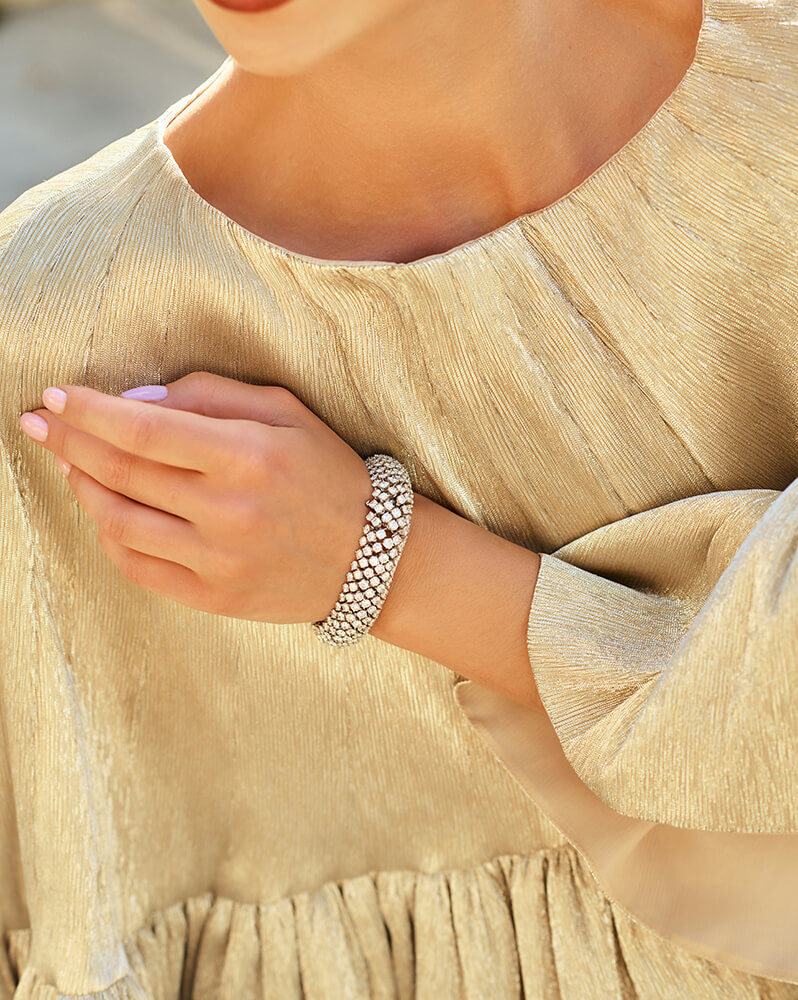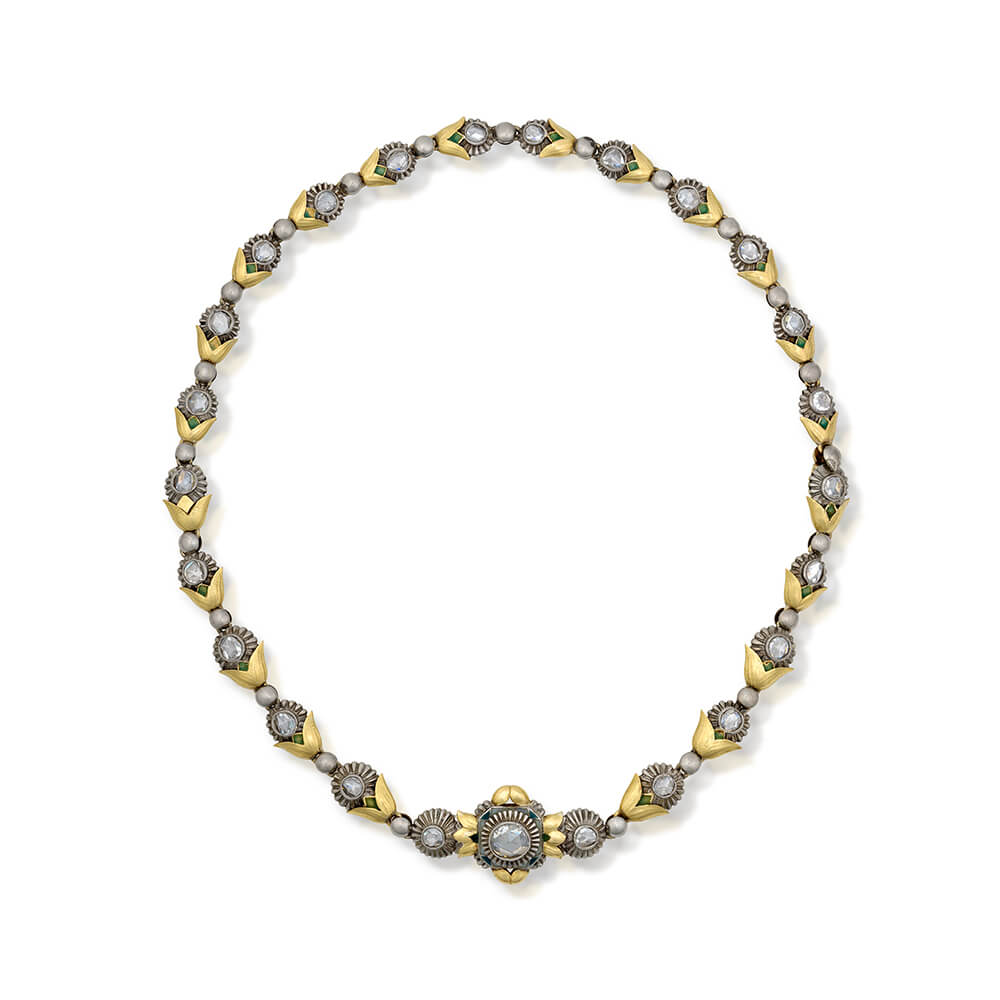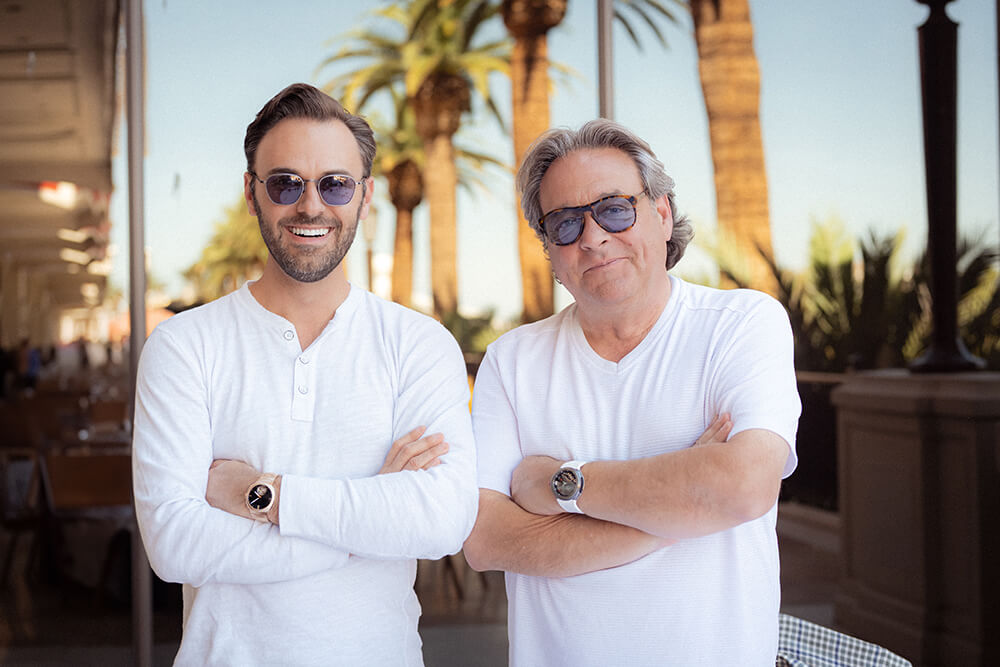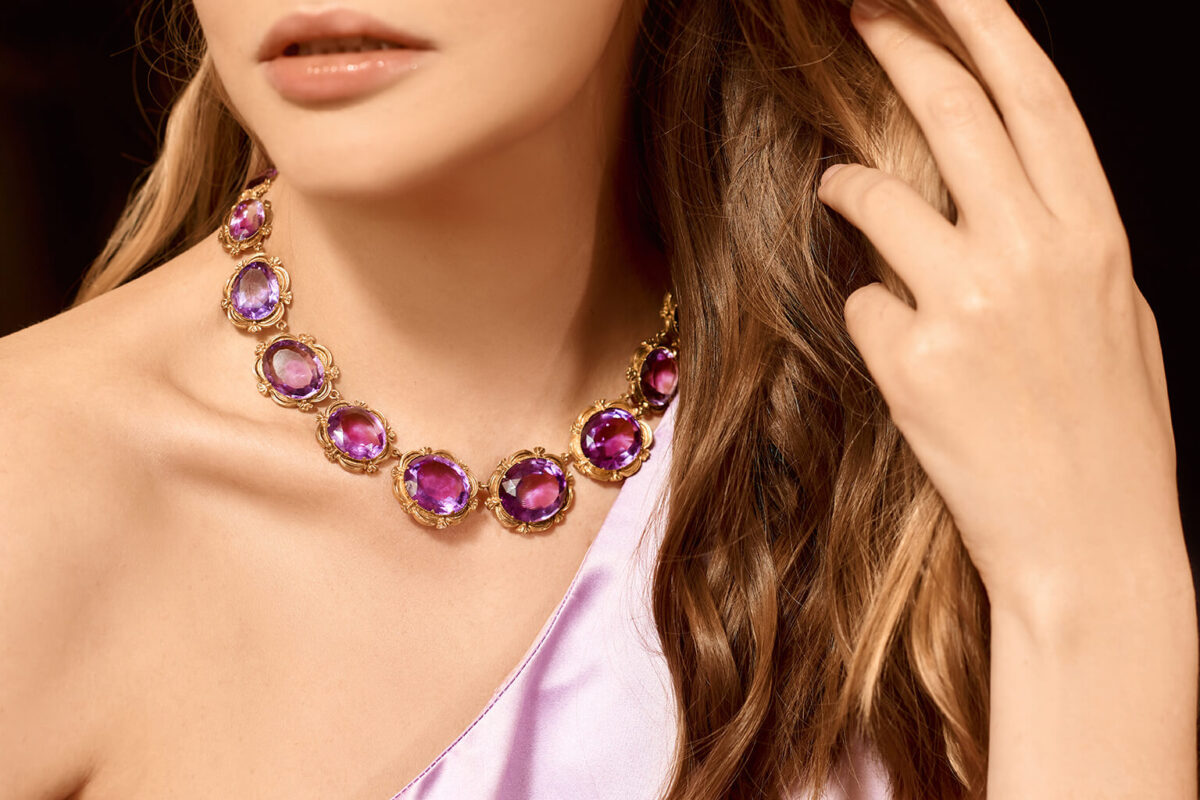Words by Sheryl Nonnenberg
The old adage “beauty is in the eyes of the beholder” can apply to just about anything, from art to cars, but anyone who has inherited jewelry knows it to be especially true. Perhaps you love the timeless quality of Grandma’s pearl necklace but will you ever wear that 1970s-era emerald and diamond dinner ring? Maybe not.
Fortunately, there are alternatives to just relegating those items to the back of the drawer. Some jewelry stores specialize in vintage and estate pieces and can guide customers through the process of consigning or refurbishing their unwanted treasures. On the Peninsula, two of the most established and reputable firms, Gleim the Jeweler and Stephen Silver Fine Jewelry, are happy to help.
Gleim the Jeweler is a family-owned firm founded in 1931 with locations in Palo Alto and Los Altos. It has been a mainstay at Stanford Shopping Center since the mall first opened in 1956. The store has always dealt in vintage and antique jewelry, which now accounts for about 50 percent of its business.
Georgie Gleim, owner and president, shares that her grandfather, Frederick Wilhelm Gleim, borrowed $500 in order to start the business. “I have the original logbooks from that time,” says Georgie, “and on his first day, he did not take in a penny.”

Cover Photo and Above Photo Courtesy of: Onysko
Despite its slow start, the store became successful and by the time Georgie was thinking of a career, joining the family firm seemed like the best course of action. “I got to know people in the industry and it was fun,” she explains. At the time, the best way to learn was on the job, but she also obtained a gemology degree from the Gemologist Institute of America. She now holds a certified gemologist title from the American Gem Society that she renews each year.
When a customer decides to clear out their jewelry box, unwanted pieces can be brought to Georgie to examine. The free service offers expert advice about consigning the jewelry for sale or remodeling into something that better fits the owner’s taste. (This is not the same as appraisal for insurance purposes, which entails a fee and a printed document.) If it definitely won’t be worn again, Georgie can measure gemstones, estimate their weight and quality and give an idea of how much it might bring in resale. Gleim is willing to take on items long-term. “Jewelry doesn’t sell quickly,” Georgie says, “but if it’s a fine, beautiful gem, it will find a home someplace.”
However, if items are “poorly made, badly worn or unattractive,” you might be out of luck. Having seen so much estate jewelry over the years, Georgie can educate clients about the pieces they own. “Oftentimes, people will bring something in with the idea of taking it apart but I will tell them, ‘Don’t do it!’ because it is too nice of an antique.”

Photography Courtesy of: Onysko
With the price of gold so high, some customers might just want to have their items melted down, but Georgie takes a firm stance in these cases. “If it is beautiful and well-crafted, I cannot bear to scrap it,” she says. “Lots of beautiful things have been melted because people have taken jewelry to someone who was not educated.”
An example of fine vintage jewelry that eventually found a good home is an exquisite tourmaline piece that a client brought in. “It was from mines discovered in the 1980s,” says Georgie. The piece needed some restoration work and was then placed on consignment for almost two years before finding an appreciative new owner. “It was sold to a woman who loves beautiful gems,” she recalls.
Georgie says that, like most people she knows in the jewelry business, she does it because she really enjoys it. “You deal with beautiful things and often there is a history to it,” she explains, adding, “The fun part about the business is that you never know what is coming through the front door.”
Stephen Silver Fine Jewelry began as an estate jewelry firm in 1980 and is also family-owned and -run. They have two locations, a boutique in Menlo Park and a private salon in Redwood City. Stephen explains why vintage and antique jewelry make up the cornerstone of the business.
“My father fell in love with estate jewelry early in his career, recognizing the superior quality and unique character these pieces offer—qualities that can be rare in the contemporary fine jewelry landscape,” Stephen says. His company obtains vintage jewelry from individuals, estates and a “global network of suppliers, international trade shows and private clientele.”

Photography Courtesy of: Gleim the Jeweler
Like Gleim, Stephen Silver offers complimentary evaluations and redesign consultations. When asked about the allure that makes vintage pieces so sought-after, Stephen has a ready answer. “Vintage jewelry collectors want to purchase and wear a piece of history,” he says. “They love a good story and the more you can tell them about a piece’s provenance, stylistic context and material qualities, the more they appreciate it. These pieces were made to last, often painstakingly fabricated by master goldsmiths using heritage techniques passed down through the generations.”
Stephen says that there is a special appeal to acquiring this type of jewelry. “Collecting vintage and estate jewelry is like embarking on a treasure hunt. Each piece is a time capsule waiting to be opened and understood.”
Heirloom Eras Before collecting estate jewelry, you’ll want to familiarize yourself with the defining characteristics of different styles. While every era has its devotees—from Georgian and Edwardian to mid-century modern—the most popular periods include Victorian, Art Nouveau and Art Deco. Here is a cheat sheet, with information from Stephen Silver Fine Jewelry. Victorian jewelry is known for its rich ornamentation and romantic symbolism, often featuring lockets, charms, signet rings, garnets, crosses and mourning jewelry, crafted in yellow or rose gold. Despite the era’s cultural conservatism, these 19th-century pieces were often whimsical and deeply personal. Art Nouveau jewelry, from the early part of the 20th century, introduced flowing forms, whiplash swirls, elongated proportions and organic patterns. Chic jewelry makers like Lalique often used colored gemstones, pearls and enamel to bring designs to life. Art Deco emerged in the 1920s and 1930s, using geometric forms, Egyptian revival motifs and Jazz Age opulence. Great houses like Cartier crafted bold pieces in platinum, often pairing diamonds, rubies, sapphires and emeralds with exotic materials like onyx. This era is known for wide, gem-paved bracelets and opera-length necklaces.


